Last week, three days after we published Get Ready For Yet Another Dramatic Change In Hawaii Travel, the University of Hawaii Economic Research Organization chimed in. UHERO “provides access to many economic and social indicators for the State of Hawaii, the four counties, and key external economies.” It’s interesting to see what they had to say and our comments, as these may impact your Hawaii travel planning.
2022 Predictions For Hawaii Travel
The current impasse in Hawaii travel is Omicron unknowns.
We all expected Hawaii to be going full bore right now. That followed a period of weakness this fall as the state asked to pause travel through October, which came right on the heels of an unexpectedly strong summer.
While daily domestic arrivals have remained high over the holidays, largely due to prior bookings, that pace is about to abate until more is known about how Hawaii will be impacted by and react to the Omicron variant of Covid.
Indications are for the acute phase of the virus to be short-lived, which, if true, certainly is good news. It will be a number of weeks until the impact in Hawaii is fully known,.
What might happens to Safe Travels.
The state may have been foolish to go the way it did in implementing Safe Travels. That inasmuch as it has a built in problem with only using trusted testing partners. Of course, those decisions were made a long time ago. But now, it is clear that tests 3-days in advance of travel, as is currently required of domestical arrivals who aren’t fully vaccinated, aren’t adequate. Otherwise the federal government wouldn’t have implemented 1-day tests for all international arrivals.
1. The state may move to implement tests within 1 or 2 days of travel instead of 3 days.
2. Tests accepted would probably then need to move to being more flexible.
UHERO said, In July, visitors from the US mainland reached an all-time high, driven by healthy US incomes and pent-up demand. Occupancy rates across all accommodations reached 80%. But after the surge in Covid-19 cases, the number of visitors fell sharply, prompted by virus concerns, new preventive measures, and Governor Ige’s request for visitors to delay Hawaii vacations.”
BOH: Last week, before the above was released, we said, “Other factors included the typical seasonal slowdown from the end of summer until the end of year holidays, not to mention the governor’s warning to pause Hawaii vacations.” Add to that the nationwide and Hawaii-specific concerns about the Delta variant. With the decline in COVID cases, we expect Hawaii travel to pick up significantly, starting with Thanksgiving and beyond. With the resumption in demand, prices will be escalating again, so this is an excellent time to consider locking in plans.
What about the Hawaii labor market and its current and future impact on hotels, restaurants, etc.
UHERO: “The (Hawaii) labor market faces pandemic-induced weakness and structural challenges. Hiring has been slow despite many job openings… and ongoing virus concerns have discouraged re-employment. As a result, there are significant shortages of workers in a number of sectors.”
BOH: Where are the workers? While travel returned, the employees who power Hawaii travel did not. Many people chose not to return to their prior jobs. That has been especially true at Hawaii restaurants. With the continuation of unemployment benefits, many had time to reassess life and make alternate plans. A good number left Hawaii entirely, with the state estimating that workforce reduction at 16,000. It is believed that more than 40,000 positions are unfilled in the travel sector, and it shows. Those workers who have returned feel the stress and are being asked to work as much overtime as is humanly possible. So when you don’t get the same Aloha as you would usually, please keep that in mind. In the future, we hear that restaurants and others are having to pay extraordinary rates to retain employees. That will result in higher costs ahead at restaurants and throughout the vacation sector. Service issues will continue to present some hindrances to normal travel.
What’s next following the Delta variant?
UHERO: “The pessimistic scenario considers the possibility that persistent restrictions due to Covid-19 could weigh more heavily on economic activity in Hawaii, on the US mainland, and globally. The optimistic scenario envisions a faster recovery from the Delta variant and a return of pent-up demand leading to a strong winter season.”
BOH: While the escalation in Delta Variant Covid cases locally and globally put a massive dent in Hawaii travel, that is waning at this point. California’s decline in cases is also a good bellwether for Hawaii since more visitors arrive from there than anywhere else.
The whiplash of 2021 Hawaii travel.
UHERO: “Tourism this year has been a mix of two very different stories. Before July, the industry enjoyed a stronger-than-expected rebound, powered by robust demand from US residents, fueled in part by Hawaii’s special appeal at a time when international travel remained difficult. As a result, the number of mainland visitors soared to an all-time high in July. But progress was then abruptly reversed. By the end of August, the weekly number of deplaning visitors had fallen by 45% from the first week of July. While some of this decline is typical seasonal behavior, in 2019, passenger counts (which include returning and intended residents) fell by only 20% over the same period. Hawaii’s high case counts and hospital capacity constraints have made front-page news nationally, and potential travelers must decide whether to postpone their planned vacations to avoid health risks and renewed restrictions on local activities. Governor Ige’s request that visitors delay travel until after October also weighs on the industry.”
BOH: We really do have whiplash from it. Hawaii travel has swung back and forth so many times in the past six months or so that it is exhausting. Hawaii went from record tourism in 2019 to no tourism and then back and forth since resuming. This year’s epic rollercoaster started in March when an unexpectedly high demand for Hawaii travel began.
Impact of COVID on Hawaii travel varied by island.
UHERO: “At the outset of the pandemic, Kauai and Maui took the biggest hits from the tourism slowdown due to their heavy dependence on the visitor industry. But by July, the Neighbor Islands had recovered much of their losses, with Maui County seeing only an 8% shortfall in visitor arrivals relative to July 2019. Arrivals to Honolulu County, which relies more heavily on international markets, remained about 24% below their pre-pandemic level. Hotels and transient vacation rentals (TVRs) fared well in the first part of the year. The easing of travel restrictions in mid-June—travelers with a negative COVID-19 test were no longer required to quarantine, and inter-county travel restrictions were removed—lifted occupancy rates above 80% across all accommodation types in July. And strong demand permitted both hoteliers and TVR hosts to make substantial hikes to prices. In July, the statewide average daily rate for TVRs was $250, 21% higher than the pre-pandemic level, while the ADR for hotels at $356 was also up 21%. Current dollar daily spending by US visitors had fully recovered, exceeding its pre-pandemic level by 5% in July.”
BOH:
Other aspects of Hawaii travel’s return have been both sticker shock price increases and lack of availability. Vacation rentals went up in price, especially on the neighbor islands, as UHERO said, and became sold out quickly as arriving visitors wanted more space and less interaction. Hotels jumped in price too. Hawaii car rentals experienced the same issues of being priced dramatically high or being entirely unavailable, and again that was worse on the neighbor islands. A whole new industry was spawned as people created their own fleets of Turo vehicles to rent.
Delta variant struck Hawaii far more than anticipated.
UHERO: “The rapidly-spreading Delta variant has now caused an abrupt—but hopefully temporary—about-face. Although vaccination rates have climbed substantially across most major visitor markets, the resurgent pandemic has dented visitor arrivals across the board. As we noted above, the number of deplaning visitors has now dropped by almost 45%, and airline capacity utilization has dropped sharply, despite a 22% reduction in seat capacity in August. Hoteliers report sharp increases in canceled bookings through October, with the rate remaining somewhat higher than normal through the winter travel season. Of course, that could change on a dime if virus conditions improve. In the meantime, unused accommodations capacity will put downward pressure on room rates and industry employment. The visitor industry stands at a difficult crossroads. Aside from visitors’ concerns about virus exposure, restrictive measures to address the Delta wave are likely restraining visitor numbers. Balancing safety requirements and convenience will not be easy. Visitors can now use Clear and CommonPass Hawaii to digitally upload their vaccination records to the Safe Travels website, expediting the verification process upon arrival and facilitating entry to local establishments. Several hotels have announced that they will require their guests and employees to be fully vaccinated, and the new federal mandate to vaccinate all workers will apply to large tourism businesses. At the end of the day, only widespread vaccination and a reduction of COVID-19 cases and hospitalizations will permit full reopening and recovery of Hawaii tourism.”
BOH:
There’s no doubt that Delta hit everyone, including Hawaii, by surprise. After all, Hawaii had weathered COVID better than most places until Delta. Also, tourism had just rebounded, perhaps too much so. With Delta came new concerns from the governor and mayors that gave residents and visitors pause. No one knew what to expect next. As that phase appears to be settling down, we expect some normalcy to return both in life here and in vacation travel to the islands. Hawaii travel will still be characterized by surges, and those will continue for the next six to nine months. After that, with the anticipated resumption in international travel, we expect some decline in Hawaii demand to a somewhat more manageable set of circumstances.
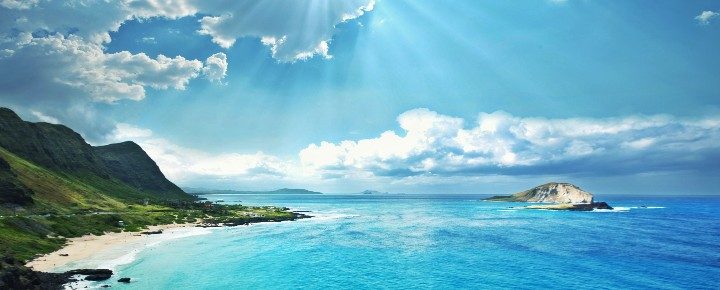
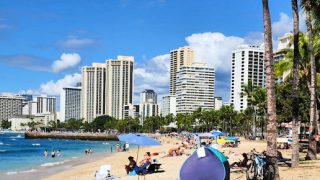
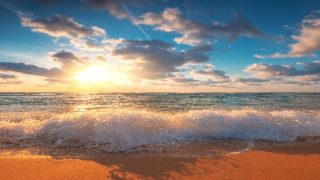
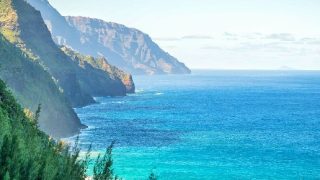
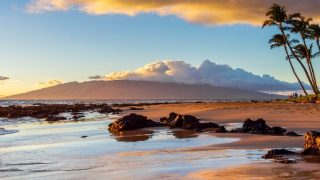
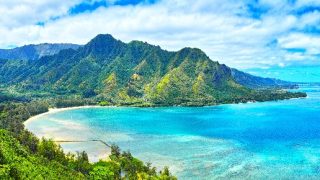

I have reservations for Maui the last week of November. I have already had my Covid shot.
Will I have any travel problems
When I arrive?
Thank you,
Gregory O
Hi Gregory.
You need to follow the Hawaii Safe Travels protocol. Start here: https://hawaiicovid19.com/travel/. Then also be sure to get a wristband from the airline so that you will not have to deal with anything further on arrival.
Aloha.
We are visiting ohau at the end of October we 3 are all vacanated just want to keep up on the news from there
Interesting article. What was not addressed was the animosity about masks and vaccine verification encountered by workers in the service sector, with people even being physically assaulted. This certainly can cause one to reevaluate one’s career choices,leading to worker shortages.
As a Hawaii tourist, if you expect “that Aloha welcome”, it helps to be a decent human yourself, and not be a narcissistic, psychic vampire. We are ALL tired. Mahalo.
When will rental cars be less than $100 a day? I want to come back but waiting for reasonable charges.
For what it’s worth, I’ve been checking rental prices daily for our trip in November. I’ve cancelled and re-reserved multiple times as the price has come down. 11-days are about $600. I’ve also been checking in March for another trip and it’s more expensive then at ~$800. I’ve been using: discounthawaiicarrental.com.
Thanks.
Very nice article guys. I’m not surprised that the Big Island and Kauai had lower tourist numbers in that time frame. The mayor of Kauai was putting a stop to tourism in a good many ways and on the Big island that very badly done second covid test was criminal. While we were on the Big Island, I saw behavior among some of the locals that I knew was going to catch up with them and that’s exactly happened. (Nov 20) My thinking is that a good many people are finally getting on the same page because, of a lot of hard work by a small group of people.
Mahalo Guys
Hi Roy.
Thanks. Your input is really appreciated.
Aloha.
Aloha Guys!
We are headed to Kauai next week and can’t wait! I will echo what others have said. You are my go to for accurate up to date info on what’s happening on the islands. We are staying in Poipu and planning on at least one visit to the north to Ha’ena/Ke’e(have our parking pass for a Sunday!). Are there any notable restaurant or other closures anywhere on the island we should be aware of?
thanks
Hi Jon.
So glad to hear you will make it back here next week. Not sure what you’d consider notable. Also, we aren’t as good at restaurants as we are at air travel and accommodations. If there’s anything specific, just give us a shout and we’ll be glad to help. We do know that getting accommodated at restaurants here is considerably slower and more complicated than it once was. So patience will help.
Aloha.
Thanks. We have several reservations at the Beach House, Merriman’s. They appear to still be open. Appreciate all you do!
Hi Jon.
Yes, they are still there. Have reservations in advance of travel if possible. Also, check for the hours they are open, as we’ve noticed that is more changeable in the past few months. Thank you too.
Aloha.
John D. We returned recently from the Big Island, and as far as restaurants are concerned, I would make my reservations well ahead of time. They fill up fast. If you wait till you get there, your choices may be limited, and the waits might be very long. Also, tools like OpenTable are your friends here. 🙂